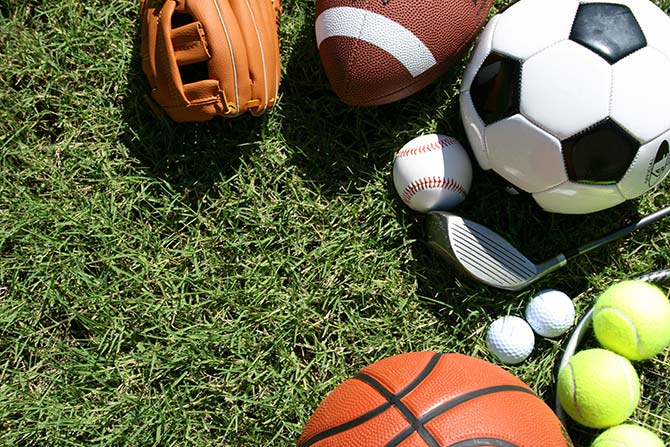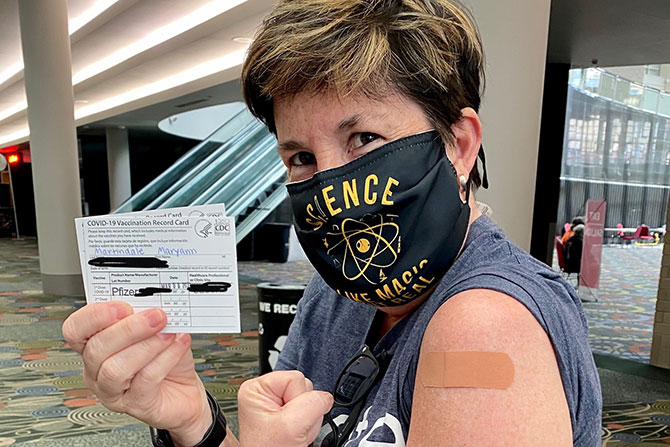Most of us can agree athletic participation yields many benefits for youth development, including fine motor skills, spatial awareness, social and leadership skills, as well as improved physical and mental health. The question becomes: How can we encourage this strong skill development without placing undue pressure on student athletes?
The National Council of Youth Sports estimates that approximately 81% (60 million) of children in the United States have registered and participated in youth sports in recent years. However, 70% of children leave sports participation by age 13, a sobering statistic. Two related topics that may correlate with this dropout are early sports specialization and burnout.
Much has been said about early sports socialization, particularly with the rise of travel and club teams. It is now quite common to see young athletes playing and competing in their sport year-round, increasing their risk for overuse and growth-plate-related injuries. As a sports medicine physician, I often recommend the following guidelines to my patients:
- The number of hours spent in their sport per week should not exceed their age (time in sport should reflect the combination of all concurrent teams’ activities).
- At least three months of rest from their primary sport each year.
- At least one rest day per week.
- Just because they are good athletes does not mean their bodies are biomechanically strong — cross-training and strength training are still recommended.
Upon hearing these recommendations, patients/parents often protest that they need to participate in club/travel teams in order to develop the skills needed to progress to the next level. I point to examples like Iowa basketball star Caitlin Clark and tennis professional Roger Federer, who did not specialize down to one sport until their teens. When gymnasts argue that their sport mandates early sports specialization, I mention Olympians Shawn Johnson and Sam Peszek, who have talked about how choosing to continue with gymnastics after trying other sports improved their skill and commitment. Current Women’s National Team member Trinity Thomas competed at state diving championships throughout high school. And Olympic gold medalist Jade Carey didn’t even qualify for elite until she was 17 years old!
Burnout is the other massive concern. Talented athletes often feel significant pressure from family members to keep playing in order to earn scholarships or achieve other goals. Yet, according to the NCAA, less than 1 in 14 (8%) of high school athletes play on the varsity team at college, and fewer than 1 in 54 (2%) are awarded athletic scholarships. One question that I like to ask my athletes after sending their parent out of the room is, “If it was only up to you, would you still want to keep playing this sport?” If their answer is no, then upon the parent’s return, I gently start the conversation about the goals of sports participation and the risk of burnout.
Kirsten Jones, in her book “Raising Empowered Athletes,” suggests that parents need to examine whether the primary goal is to encourage their child to stay active, learn skills and make friends OR to encourage playing at the highest level possible. Her key points to remember are:
- Do not project into the future and, instead, choose what is right for your family right now;
- Avoid the group mentality of participating in an activity just because others do;
- Set the tone from the beginning that the child’s preferences lead the choice selection; and
- The focus needs to be on fun.
I also mention an even more sobering statistic that children/adolescents in highly affluent communities now have worse mental health than their counterparts in regions of low socioeconomic status. Much of this is related to the felt pressure of high achievement in all arenas so that they can get into a good college. The perceived culture in these communities is that without getting into a good college, all is lost. Jennifer Breheny Wallace details this mental health crisis in her book “Never Enough.”
One key to combat societal and peer pressures is letting the child’s home be a safe haven, where they get to be themselves and express their full selves. When parents stop and ask themselves the tough questions, “Am I passionate because I’m living my dreams and glory through my child?” and “Am I helping or hurting my child’s chances of finding success?” is when true reflection/assessment begins. Per Jones, three ways a parent can work toward stepping back from intense personal involvement are to:
- Recognize humans’ “natural negativity bias” to discount or ignore positive comments/improvement;
- Allow your child to develop her “grit” and learn ways to turn pressure from working against herself into providing incentive to work for her goals; and
- Embrace the concept that stepping back and not being so involved might just be what your child needs. Is it possible that your presence at games and practices diverts your child’s attention from her performance? Is she free to just play her game?
As children grow and gain advantages from playing athletics, a key life skill they will learn is that we cannot always control what happens to us, but we can control 100% of how we respond. The job as parents is to first understand and know their child; deciding how to help in a given situation should be a secondary priority. Encourage each child to learn life skills focused on internal qualities that they develop, such as:
- Finding ways to rely on positive “self-talk” and discounting negative thoughts;
- Seeing that effort will result in mastery;
- Learning how to be grateful for talents;
- Embracing challenges and opportunities to learn;
- Seeking inspiration and lessons of success from others, including from teammates rather than seeing them as threats; and
- Discovering how to persist in the face of disappointments and setbacks.
When children discover their formula to succeed, they can apply those steps to whatever they pursue. Parents can provide strong examples of how to make that happen, whether it is helping to deal with stress; ensuring sufficient nutrition, rest and attention to body signals; encouraging their child to drive the how of achieving a goal; or supporting them in examining actions/responses and becoming curious about the improvement process.
To paraphrase the infamous basketball coach John Wooden, be more focused not on helping your child necessarily be the best, but to be their best. And even more importantly, to emphasize doing their best based on their current situation: What may be their best on any given day may change dramatically due to innumerous internal and external factors.
Sara Walker is a HAES-aligned family- and sports-medicine physician who practices at her clinic, The PEAAC, in Millcreek, UT. She specializes in treating people with eating disorders and performing artists/athletes/musicians. She serves as a Team USA doctor for U.S. Figure Skating and USA Gymnastics. You can reach Sara at sara@thepeaac.com or thepeaac.com.
Sources
- Breheny Wallace, Jennifer. Never Enough: When Achievement Culture Becomes Toxic — and What We Can Do About It. Portfolio/Penguin, 2023.
- Jones, Kirsten. Raising Empowered Athletes: A Youth Sports Parenting Guide For Raising, Happy, Brave, and Resilient Kids. Triumph Books, 2023.

Placard posted at both ice rink entrances at the Skating Club of Boston, where many elite skaters train. Photo courtesy of Ellen Geminiani, MD.









